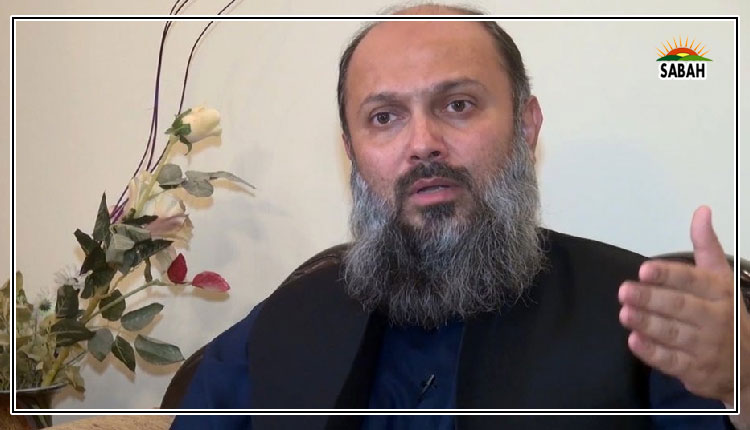New data, old insights ….Dr Ayesha Razzaque
There was a time when systematically collected data about schoolchildren’s learning levels was scarce, spottily collected, and hard to obtain. ‘Reforms’ were the brainchildren of politicians or senior bureaucrats in charge at the time, usually without a formal connection to the education sector. Reforms that came up this way were guided by anecdotes rather than data and, therefore, hit-or-miss.
The post-9/11 years brought a flood of development programmes, many in the education sector, by foreign aid and development agencies into the country. One lesson that has thankfully sunk in within policy circles is that grown-ups make policy and reform decisions based on evidence and data. Perhaps as a result of that realization or perhaps the general buzz around data science and decision-making based on evidence, we have seen more data collection efforts, both domestic and international (through participation in global benchmark tests), with varying levels of regularity.
Among the major recent data collection and reporting efforts are the National Achievement Test (NAT) 2023 report, compiled by Cambridge University Press (data collected by the federal Pakistan Institute of Education and Education Departments of provinces) and the Annual Status of Education Report (ASER) Pakistan 2023 by the Idara-e-Taleem-o-Aagahi (ITA). Both reports are notable for the scale and extent of their data collection efforts and are filled with plots slicing their data dozens of ways.
The ASER-Pakistan 2023 report is based on a wide-ranging household survey (notable for its scale). It has been conducted with some regularity over the last 10 years – in 2014, 2019, 2021, and 2023 – and reports on a lot of dimensions. What was key to me were the observed learning achievement levels over the years. They are notable for being (mostly) flat over the years. Learning achievement in Urdu, Sindhi, and Math at 5th grade level in most provinces and districts has gone down in the 2023 survey. The report does not specify whether it is due to school closings during Covid-19 or any other reason. However, if the new school textbooks alone were supposed to improve learning, there certainly does not seem to be any evidence of that.
The NAT 2023 reports test results of grade 4 students for English, Foundational Literacy (FL), Math, and Urdu & Sindhi and grade 8 students for Math and Science. The averages of learning levels are in line with what one might expect. A small nugget that stood out in the results of 4th graders was the fact that the distributions of English, Math, and Urdu & Sindhi scores were bi-modal – they have two peaks. This is indicative of two groups of students – one group that is performing better than the other. The report stops short of identifying causal or correlated factors, although we can probably guess what they might be.
And that is my takeaway from both of these recent reports. Broadly speaking, the learning levels of children appear to have, more-or-less, stagnated. One study after another, the story the new data is telling is the same, but the recommendations they generate are decades old. The data is new, but the insights it is giving us are old and well-known. It is time for action.
The recommendations that are produced by such surveys, reports, and studies have become reliably predictable: Teach children in a language they understand (their mother tongue), particularly in early grades. Teach the curriculum. Follow up on assigned homework. Provide teachers the opportunity to develop professionally. Don’t just hire anyone to be a teacher but make sure they are qualified for the subjects they need to teach.
Add to that all the usual school infrastructure asks – more schools, more classrooms, electricity, water, bathrooms, boundary walls, libraries, internet connectivity, etc – that many of us take for granted and expect from a school.
Aside from schools’ legitimate minimum infrastructure needs above, all of the other items are well-established good practices, and many are contingent on one factor: That the teacher be qualified and motivated to do their job. That, in my view, is the hardest nut to crack in school education – making teaching in schools a profession of first choice, not a career of last resort.
Without that crucial piece, all the professional teacher training in the world will not make a difference. There is only so much that monitoring by a distant education bureaucracy tucked away in some distant capital / provincial capital, or even at the district level, can do. No well-performing school education system in the world has gotten to where it is by cutting corners when hiring teachers.
Anyone who has ever supervised people at work knows that it is infinitely harder to get work out of someone uninterested, unmotivated, and adamant to put in no more than their absolute minimum effort. Motivated people who (on most days) love their work and workplace and take pride in doing their job well are the ones who regularly go the extra mile or two. When that is not the case, you must build extensive and expensive monitoring mechanisms to push and prod and constantly look over shoulders.
We need better teachers, teachers that want to be teachers. The job of monitoring and accountability is beyond even the most well-intentioned faraway bureaucracies. The country is still coming to terms with the devolution of education from the center to provinces, but that will not be enough. Punjab alone, with a population of around 130 million, is larger than most countries in the world.
Schools need to be accountable to the people they serve: the parents and communities they are in. That puts some responsibility on parents and a shift away from the all-too-common attitude in which parents treat their responsibility of educating their children as fully outsourced to schools. Public schools used to have regular parent-teacher meetings, but those have largely fallen by the wayside now. In some respects, it feels like we are going in reverse.
There is no way around fixing the teaching profession which (considering we have many hundreds of thousands of teachers across the country) will likely be expensive. That makes fixing public school education a money problem, which links it to the state of the economy. There is no fixing education without fixing the teacher problem.
No school system ever has succeeded without appointing qualified and motivated people as teachers and allowing them career growth. A great teacher can make up for a poorly written textbook, a lack of classroom technology or other resources, but it does not work the other way round.
The writer (she/her) has a PhD in Education.
Courtesy The News












